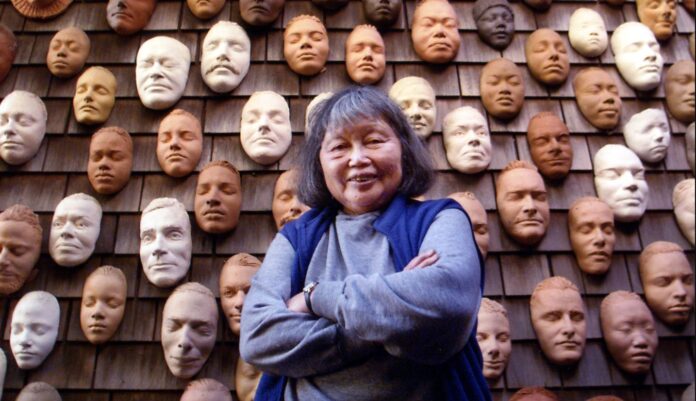Ruth Asawa at Face Mask Wall. Courtesy: Stanford University Cantor Arts Center
By Corrie Martin
Stanford Professor Marci Kwon champions artists and art of Asian America with Cantor Arts Center
Marci Kwon, assistant professor of art and art history, recalls making an electrifying discovery one afternoon in the special collections of Stanford University library. Opening a folder, she finds tucked inside a 2001 photograph of a small group of friends posing casually together in the sunshine. Looking closer, she begins to recognize faces and notices that on the backside of the snapshot, its taker, preeminent photographer Irene Poon, has signed her name and labeled the subjects.
In the photo are pioneering Asian American artists and writers such as Jade Snow Wong, George Miyasaki, Carlos Villa, and Nanying Stella Wong, among other luminaries. Seated at the center of the photo is a beaming Ruth Asawa, decked out in shades of purple.
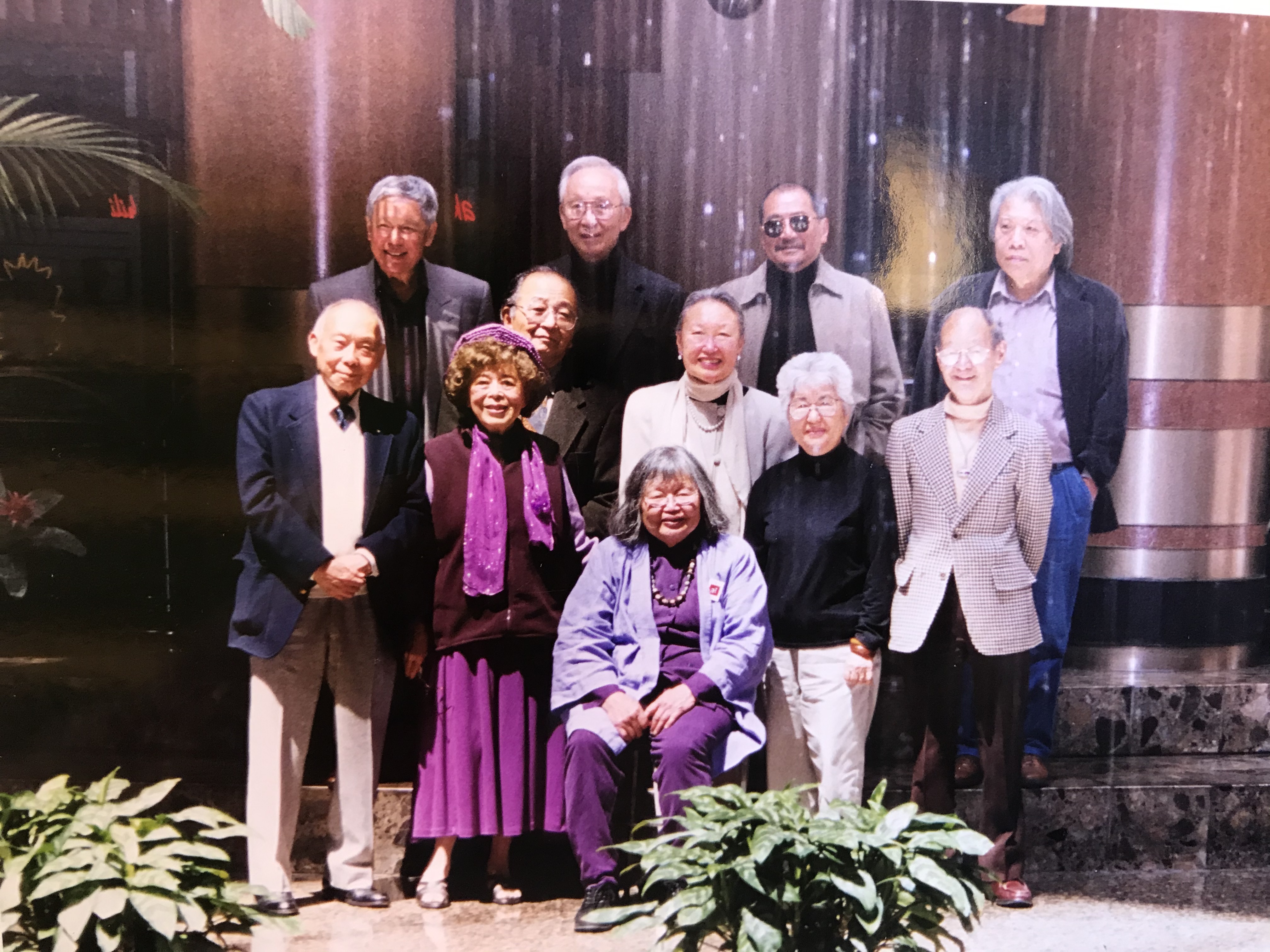
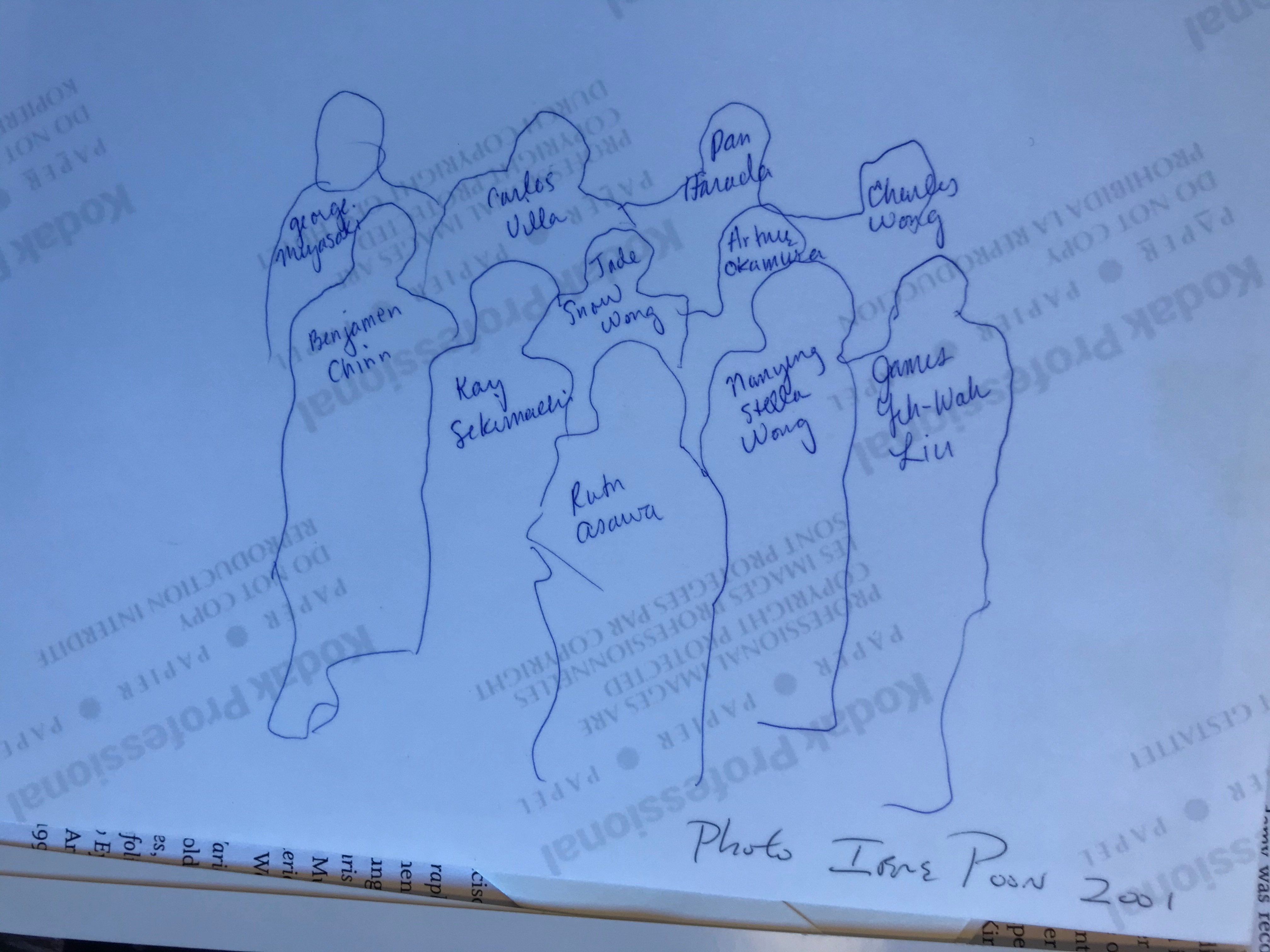
“The very texture of history changed for me with that one photograph,” Kwon said to AsAmNews. “Gathered together for lunch, pausing for a photo together are artists whose works I have been studying for years. That photograph weaves together these artists, their full and complicated lives, their historical significance, the beautiful things they made, how they lived and worked in community with other artists. These are the things that really interest me,” explains Kwon.
Two decades after the photo was taken, Asawa is at the center of Kwon’s recently launched Asian American Art Initiative (AAAI) at Cantor Arts Center at Stanford University, a new hub for “collecting and exhibiting works of Asian American/diaspora artists; preserving archival materials; fostering undergraduate and graduate education; and cultivating community collaboration and dialogue through public programming.”
With the AAAI’s acquisition of Asawa’s 233 ceramic “life masks”— the artist’s stunning project 45 years in the making and never before exhibited publicly—the AAAI is poised to “change the history of American art as it has been written thus far,” according to founding co-director, Dr. Aleesa Alexander, assistant curator of American art at the Cantor.
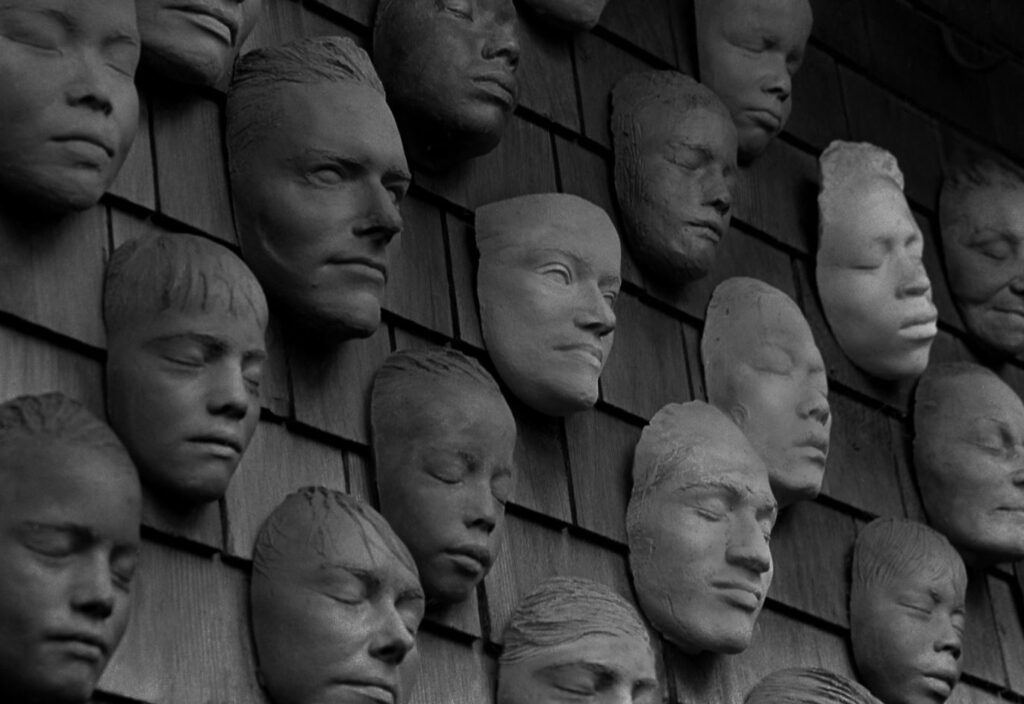
Alexander adds, “we need to acknowledge that generations of scholars have been doing this work for a long, long time and have made our work possible. The AAAI is not inventing anything, but we are moving the conversation forward exponentially as an encyclopedic collecting institution on an unprecedented scale. Another thing that is unique to AAAI is our combined historical and contemporary focus.”
The AAAI has taken on an ambitious challenge of establishing itself as a comprehensive archive and repository of the diverse field of Asian American art reaching back into the 19th century. Along with the acquisition of Asawa’s works, the AAAI is now the home of the Michael Donald Brown Collection comprising 141 stunning pieces, several from the 19th and early 20th centuries.
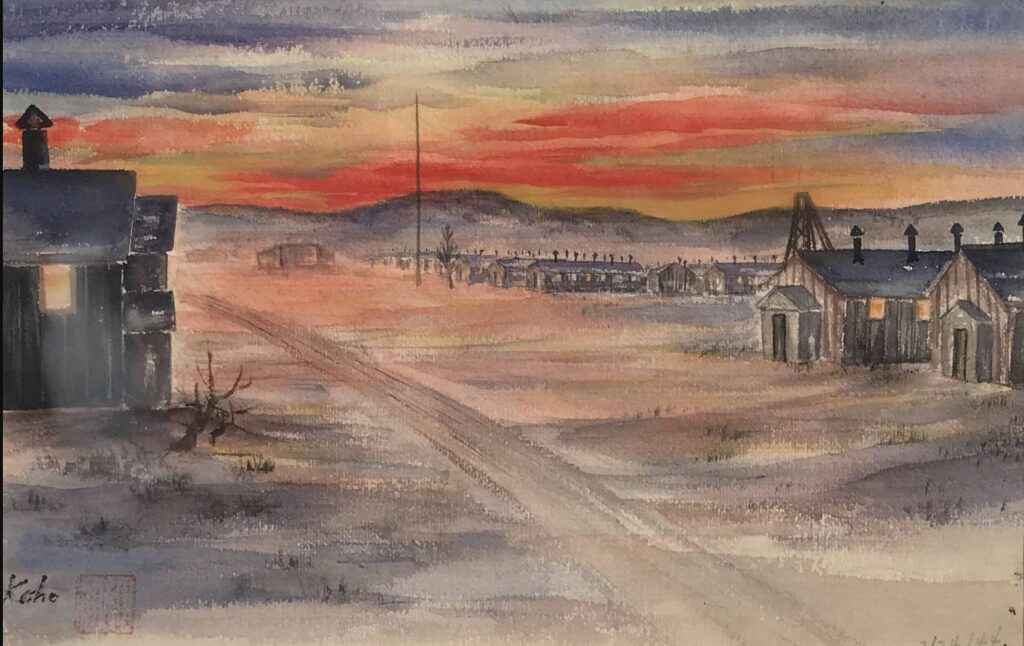
“Many students are surprised to learn that Asian American art history goes that far back, or that we can start talking about Asian American art as a story of the early 19th century,” Professor Kwon says. So, she always opens her Asian American art history course at 1850 by examining historic photographs of the construction of the transcontinental railroad, the endeavor that enriched her university’s benefactor and namesake, Leland Stanford. “Out of the literally thousands of photographs from that era,” she explains, “only a handful of Chinese laborers appear, even though they made up a huge part of the labor force.”
Her students learn for the first time that Chinese laborers were enlisted to build the Stanford campus and that they also planted the beloved campus palm trees. “They never look at these palm trees or see the campus the same way again,” Kwon says. Once students begin asking questions about who is seen, what is visible, and what is rendered invisible by the visual record, they can begin to understand the significance of the work of artists, archivists, scholars, museums, and other institutions of cultural memory. For now, the AAAI’s priority is collection and preservation.

Says Kwon, “the recent tragic death of photographer Corky Lee from Covid-19 reminds us that there needs to be more recognition and support for the preservation of artists’ work and life stories. Their legacies are not secure.”
The response to AAAI’s launching, says Alexander, has been “overwhelmingly positive and we’ve received tremendous support from people saying this is long overdue. Everyone wants to help!” Kwon adds, “for me, the most meaningful response has come from the community of relatives, family members, friends, colleagues, students, and devotees of the artists themselves, who have been asking where the place of Asian American art and artists in the US is, and feel we finally have a permanent home.”
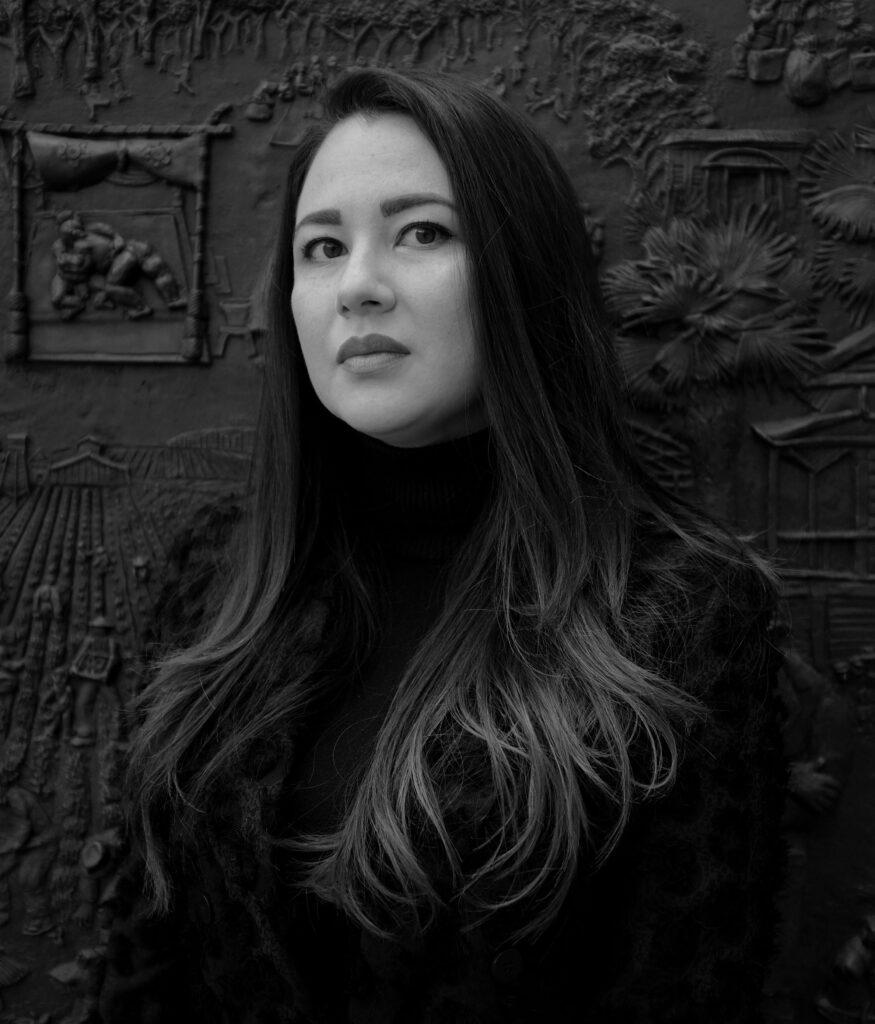
Looking to the future, Alexander and Kwon envision AAAI growing into a physical gallery and destination for scholars and visitors to encounter living artists and to gather for exhibitions and programs. Alexander adds, “hopefully we will be publishing books, exhibition catalogs, and research.”
“Scholarship doesn’t get depleted, it creates more need for further scholarship,” muses Kwon. “The more you research and write, the more you realize there are more stories to tell, more knowledge to discover and share.”

Want to learn more about Asian American art?
Check out these recommendations from Professor Kwon and Dr. Alexander:
Irene Poon’s Leading the Way: Asian-American Artists of the Older Generation (2002).
Asian American Art: A History (2009), edited by Gordon H. Chang, Mark Johnson, and Paul Karlstrom
John Yau’s pivotal essay, “Please Wait by the Coatroom,” about the placement of Wifredo Lam’s “The Jungle” (1943) in the Museum of Modern Art. Originally published in Arts Magazine, vol. 63, no. 4, 1988.
And these organizations:
Asian/Pacific/American Institute at NYU
Smithsonian Asian Pacific American Center
AsAmNews has Asian America in its heart. We’re an all-volunteer effort of dedicated staff and interns. Check out our new Instagram account. Go to our Twitter feed and Facebook page for more content. Please consider interning, joining our staff, or making a financial contribution to support us.

